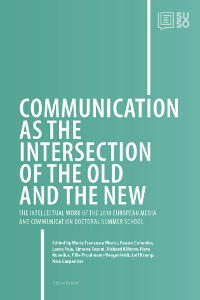
| |||
Communication
| |||
| Title chapter: | The construction of the homeless in the Greek street paper shedia | ||
| Author: | Vaia Doudaki Nico Carpentier | ||
| Keywords: | homeless, construction, discourse theory, hegemony, street paper, home, house, agency, citizenship | ||
| Abstract: | The chapter deploys discourse theory to study the construction of the homeless subject position in a Greek street paper called shedia. After a brief outline of the relevant parts of Laclau and Mouffe's (1985) discourse theory, the article first reports on the theoretical work that outlines the elements that construct the homeless subject position, keeping in mind the existence of a hegemonic version of this homeless subject position, which is driven by stigma and othering. While mainstream media often replicate this problematic representation, street papers offer counter-hegemonic (and more respectful) articulations of the homeless subject position. In the case study that follows, 11 print issues (totalling 726 pages) of the Greek street paper were analysed through textual analysis. On the basis of this analysis of shedia’s coverage, we can see three nodal points of the hegemonic discourse on the homeless at work: the absence of the home as stigma, the lack of agency and the political identity of the denizen. The counter-hegemonic discourse, that can also be found in shedia, has three nodal points that are the inverse of those of the hegemonic discourse: the alternative home, the attribution of agency and the political identity of the citizen. Arguably, this case study is relevant because it shows the mirror-image-logics of hegemonic and counter-hegemonic representations, and the significance of using high theory and political philosophy to further our understanding of social practices. | ||
| Click here to download full chapter [pdf] | |||
|
The | |||